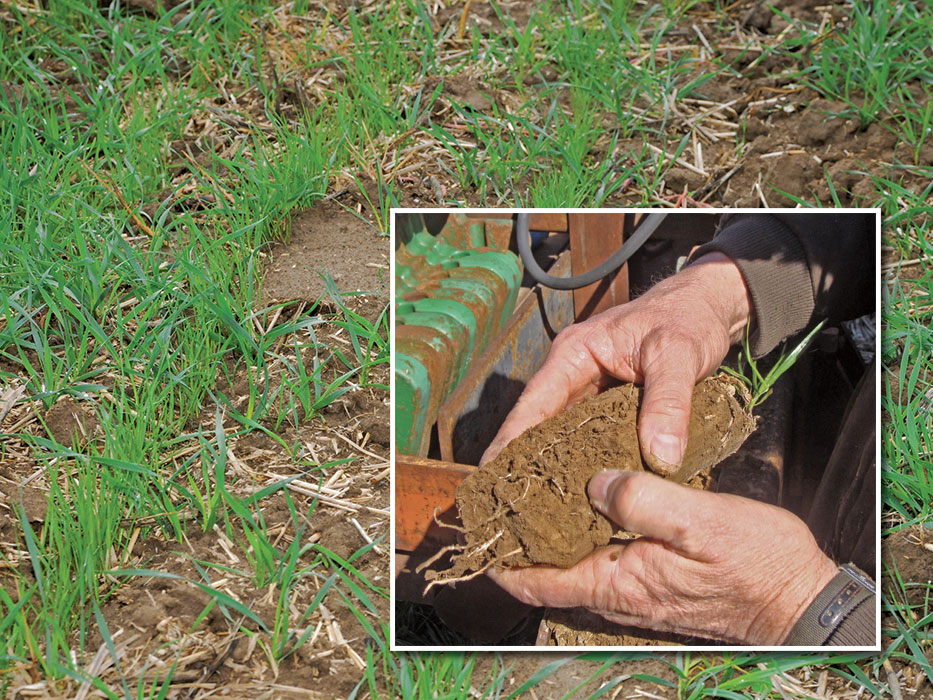Mike Plumer was still alive when the cover crop experiment began in the Midwest. An innovator from the get-go, Mike was doing his own farming while also on the faculty of the U. of Illinois, researching and helping area farmers become more successful.
In the mid 1990s, Plumer and Ralph “Junior” Upton got together and the revolution got a new boost. Upton had already been experimenting with cover crops on his Springerton, Illinois acreage. The year Plumer and he first planted annual ryegrass made their eyes practically bug out. Here’s how Junior describes it, in a recent SARE article:
“Upton recalls introducing ryegrass into his system and seeing roots 48 inches deep, growing through the fragipan, even though above-ground biomass was less than five inches tall. Being vulnerable to droughts was an ongoing concern in the past, but now cover crops have helped to alleviate some of that worry by improving both the water-holding capacity of his soil and the rooting depth of his corn and soybeans. “Dry weather killed me in the past due to a fragipan,” Upton explains. “I had been farming the top five inches of soil, where now I use four feet of soil.”

Since then, the number of farms employing cover crops has increased dramatically, partly because of the educational work of Plumer and Upton. Until his death in 2017, Plumer was a tireless champion, and Upton continues his efforts that, he said, have been in the direction of conservation tillage since 1970.
In celebration of the quarter century of work that has gone into cover crop market development and usage, we’ll do some interviews with growers from Oregon who funded a lot of the research and development of winter hardy species of annual ryegrass and other cover crops. We’ll also interview some of the early adopters in the Midwest, and the innovators who came up with more efficient ways to plant cover crops and even how to interseed cover crops with standing corn.
While the adoption rate to cover crops has still been a drop in the bucket (a bit less than 10% of all farm acres in the Midwest are in cover crops), the rate of acceptance has continued to rise. At the current rate of new acres being planted, it’s estimated that we could double in the next 10 years what has been planted in cover crops in the past 25 years!






